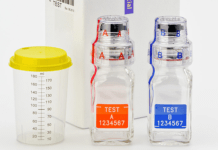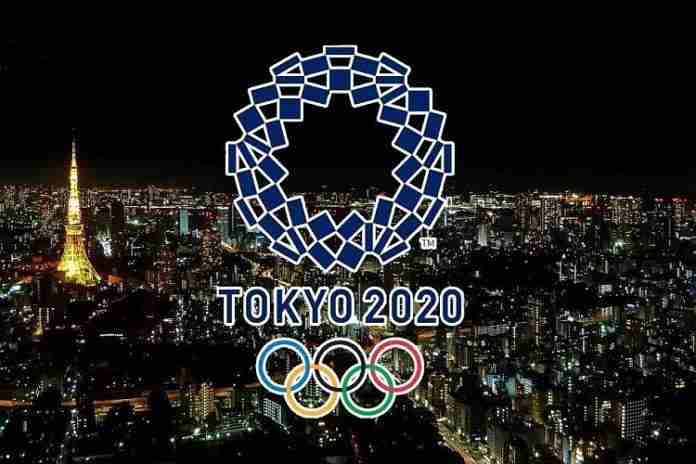The ultimate strategy of the high-profile survivors of the Larry Nassar sex-abuse cases was unveiled via a court filing last Friday: target the assets of the United States Olympic & Paralympic Committee.
The filing by the “Additional Tort Claimants Committee of Sexual Abuse” asks the U.S. Bankruptcy Court for the Southern District of Indiana to approve the hiring of Nashville, Tennessee-based Gibbins Advisors for “[a]dvising the Survivors’ Committee in investigating the assets, liabilities and financial condition of the USOPC.”
The specific reason for the request is further explained, with regard to the forthcoming election by the 517 plaintiffs against USA Gymnastics and others on the proposed Reorganization Plan for USA Gymnastics, which includes a settlement option that would trigger $217.125 million in damages payments:
“The non-consensual third party releases and channeling injunction would extinguish all Abuse Claims for compensatory, punitive and exemplary damages against USOPC. USOPC is not contributing any of its own funds as consideration for the release and channeling injunction. The Disclosure Statement contains no information relating to USOPC’s financial condition or its ability to make a contribution of its own funds as consideration for its release while maintaining viability to fulfill its mission” and
“Some of the jurisdictions in which cases against USOPC are pending permit discovery of a defendant’s financial condition in connection with punitive damages claim. Therefore, the Abuse Claimants need disclosure concerning USOPC’s financial condition to evaluate what they would be giving up by making the Settlement Election. The Court will also need this information to determine if the payments under the Plan constitute sufficient consideration to release the claims against USOPC, including the punitive damages claims.”
What does this mean in plain language?
(1) The Claimants Committee, which consists of nine women who have filed as abuse survivors, is unhappy that the Settlement Election option settles all cases – now and in the future – in one stroke and absolves all of the related players – including the USOPC – from any further exposure to liability.
Olympic gold-medal winners Simone Biles and Aly Raisman railed against this aspect of the proposal on tweets reported on Saturday (29th), with Raisman stating:
“The problem is USAG & USOC don’t want anyone to know. This is a massive cover up. The only way for anyone to know what really happened is if someone forces them to release ALL documents & data to investigate. HOW CAN WE MAKE THIS HAPPEN?”
(2) In order to advise its individual claimants on the proposal, the committee wants to hire an expert to estimate how much money it might recover from the USOPC, that would still allow the USOPC to continue operations.
(3) This information will be important to the U.S. Bankruptcy Court as well to determine if the financial aspects of the settlement plan filed by USA Gymnastics are “fair.”
This is pretty sophisticated stuff from the Claimants Committee and its legal team; it’s worthwhile to note that the claimants group includes two attorneys, Rachel Denhollander and Sarah Klein, who are both co-chairs. Consider:
● The proposal plan of reorganization for USA Gymnastics, if approved by the U.S. Bankruptcy Court, will go to a vote in April and early May by the claim holders. It can be approved, either with a “Settlement” option or a “Litigation” option.
If the Settlement option is adopted, all 517 of the claimants will receive a cash payout from $1.25 million down to $82,550, depending on the nature of the claim. If the Litigation option is adopted, then everyone is on their own and has to re-file within 30 days.
● The request for information about the USOPC ‘s financial situation and the tweets by Biles and Raisman are interesting tactics to counter the guaranteed payout being offered by the Settlement option. In simplest terms, the pitch is that it’s more important to uncover “all the facts” and affix specific blame to individuals and organizations – ostensibly so that such abuse will never happen again – then to receive the promised financial compensation, which would have to be sought after in individual trials that will take years (and may recover nothing).
● The public threat of going after the USOPC’s assets could create pressure on that organization to sweeten the pot. The Claimants’ filing states that the USOC is putting none of its own money; this is technically correct, but the USOPC was an additional insured on the USA Gymnastics policies and the settlement offer of $217.125 million could not have been made without the USOPC’s agreement, for which it required all claims against it to be settled.
The Plan specifically states that “Nothing contained in this Plan constitutes an admission or denial by any Person of liability for, or the validity or priority, amount or extent of any Claim … asserted against [USA Gymnastics] or any third party.” This and the agreement to release all parties by taking the Settlement option is for the protection of groups like the USOPC against further actions for punitive damages or other causes of action.
The USOPC’s assets are not actually the subject of much doubt. Its 2018 financials showed $594 million in assets, including about $495 million in cash and investments. In 2018 alone, it took in $296 million and spent $270 million.
However, if the USOPC were to agree to contribute anything more than its coverage as an additional insured, it could open itself to claims from athletes in other sports – swimming and taekwondo come to mind – that abuse survivors there also deserve compensation (and possibly, punitive damages).
Is there some middle ground? Possibly, but that’s not going to come out in any public filing until an agreement – privately negotiated – is made.
● The Claimants’ Committee’s attorneys are well aware of sec. 1129 (b) of the U.S. Bankruptcy Code, which allows the Bankruptcy Court to confirm the Reorganization Plan, even if it loses in a vote, “if the plan does not discriminate unfairly, and is fair and equitable, with respect to each class of claims or interests that is impaired under, and has not accepted, the plan.”
The Court could find that the Settlement program is the fairest to all of the 517 claim holders, since it pays them all, rather than leaving each of them to their own fate in an uncertain legal environment for probably 451 of the 517 plaintiffs (87.2%). The 66 claimants against USA Gymnastics who alleged abuse in events hosted or owned by the federation would have a fair-to-good opportunity for recovery in suits against USAG and/or the USOPC. Those 66 are the ones whose proposed compensation is $1,250,758 each.
There is also the matter of de-certification of USA Gymnastics, which was begun by the USOPC, but halted once the Chapter 11 filing was made in 2018. Once the election or defeat of the Plan has been made, the Bankruptcy Court oversight of USA Gymnastics can be concluded and the de-certification process could actually begin.
But, it’s worth remembering that even if the USOPC decides to remove USA Gymnastics as the National Governing Body for the sport in the U.S., its word is not final. The Ted Stevens Olympic and Amateur Sports Act, at 36 U.S.C. sec. 220529 requires that an NGB whose recognition has been revoked by the USOPC “may obtain review by any regional office of the American Arbitration Association” and “Final decision of the arbitrators is binding on the parties if the award is not inconsistent with the constitution and bylaws of the [USOPC].”
We’re not close to the end of this, but the next step comes in a hearing on 9 March in Indianapolis for the Bankruptcy Court to determine if the Reorganization Plan can go to a vote. Then it’s up to the survivors to determine what’s next.
Rich Perelman
Editor
You can receive our exclusive TSX Report by e-mail by clicking here. You can also refer a friend by clicking here.























